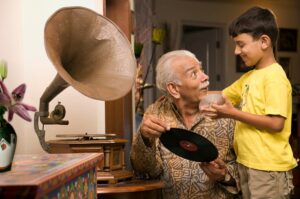Since September 18, 2018, families have been able to apply for Baukindergeld when buying or building a property. With this financial support from the state, more families with young children should be able to realistically take the step into the longed-for home of their own.
Critics feared that the support would additionally drive up real estate prices. Before the subsidy expires at the end of 2020, it is time for an interim assessment.
Table of contents
Dream Of Owning A Home
For many young families, owning their own four walls is the fulfillment of a dream. But the wishes are different. For one family, having their own garden in an appealing size is crucial.
For another family, the location and surrounding infrastructure have priority when choosing a new home. The trend toward urban living continues and is increasing real estate prices in central locations in many German cities.
While the children are small, families usually have one or one-and-a-half incomes at their disposal. This makes it even more difficult to take out a loan at this stage of life.
A study by Sparda Bank shows that an average of 81 percent of the real estate price is financed by a loan. The Baukindergeld is intended to provide families with financial relief and enable them to purchase a property even with one or one-and-a-half incomes.
Until the end of 2020, families can still apply for the government support.
Points Of Criticism: Rising Property Prices And Wealthy Families?
Before the introduction of the Baukindergeld, many experts assumed that the subsidy would cause land and property prices to rise further. This would mean that buying a property would still be out of reach for most families.
Nine billion euros out of a total of 13 billion, the DIW experts expected, would go to families who could afford their own property even without the subsidy.
A fundamental problem, they said, was often the lack of equity among young families with lower incomes. Favorable subordinated loans from the development bank Kreditanstalt für Wiederaufbau (KfW) would be more suitable for them to supplement the lack of equity.
Because as long as interest rates remain so low, even low-income families could afford the installment of a loan. Their problem would be the commitment for a loan.
Tip: Good and comprehensive advice from financial experts is the key to being able to conclude the ideal construction financing. Because there is not the one financing that fits all families.

Building Subsidies Can Help
Ideally, well thought-out financing creates reserves for acute crises, such as necessary heating repairs.
A study on the Baukindergeld from the Real Estate Association from 2019 shows a significant relief through the Baukindergeld for young families. Depending on the place of residence and family size, a saving of between 5 and 63 percent is realistic for families, it says.
Two Factors Are Decisive:
- Number of children.
- Location of the property.
In particular for the purchase in more rural environments the building child money could be used advantageously by families.

Those are actually also the regions, in which the prices for real estates and properties rise comparatively small. In the metropolises of Germany the real estate prices rose in the last years partly violently.
In addition, the supply of family-friendly real estate is limited here. Whether the Baukindergeld has additionally promoted this development can only be reliably said after the subsidy has expired.
This is because the persistently low interest rates and high demand are also causing prices in sought-after locations to continue to rise.
The Step To Owning A Home
Anyone who dares to take the step toward owning their own property should clarify important points relating to the desired property in advance, with or without the subsidy from the Baukindergeld.
- Which points are non-negotiable for your own dream property?
- For example, is it a garden or proximity to work?
- Should the property be age-appropriate?
- Has the family planning been completed?
- Should it rather be a house or an apartment?
- Terraced house or detached house?
- Existing property or build it yourself?
- How much personal contribution is realistic?
- What additional securities are there?
- How can reserves be built up for repairs?
Remain Realistic
Even if the purchase of your own property is the fulfillment of a dream, its purchase or construction should be planned realistically. This concerns both the financial framework of the family and the point of own contribution.
Families with small children in particular should consider how much time they can realistically invest in advance in the construction or renovation of their new home.
Because even if small children are well and safely kept in a playpen in the short term, the mood and health of small children cannot be planned for in the long term.
For peace in the family, long-term planning for older properties and lowering aspirations can be salutary. For example, the property does not have to be perfect from top to bottom when you move in, but is allowed to evolve into a beautiful home over time.
Long-term And Prudent Planning
Realistic and far-sighted planning makes dreams of living possible for young and old alike.A step as big as financing your own home should be planned long-term and prudently.

Support such as the Baukindergeld is helpful in financing. However, it does not offer the ideal solution for all families and for every project.
Other funding options, such as subsidies from the KfW Bank, should also be taken into account. Since the offers are varied and confusing, it is advisable to seek advice from independent experts.
Through their experience, they tailor individual solutions that make construction financing as easy as possible for families.
Facts About The Building Allowance
The taxable income of the parents must be below 75,000 euros per year for one child. For each additional child, the income limit increases by 15,000 euros.
For each child, the family receives an annual subsidy of 1,200 euros over ten years. A further exclusion criterion is that the parents do not own any other property at the time of purchasing the home.












